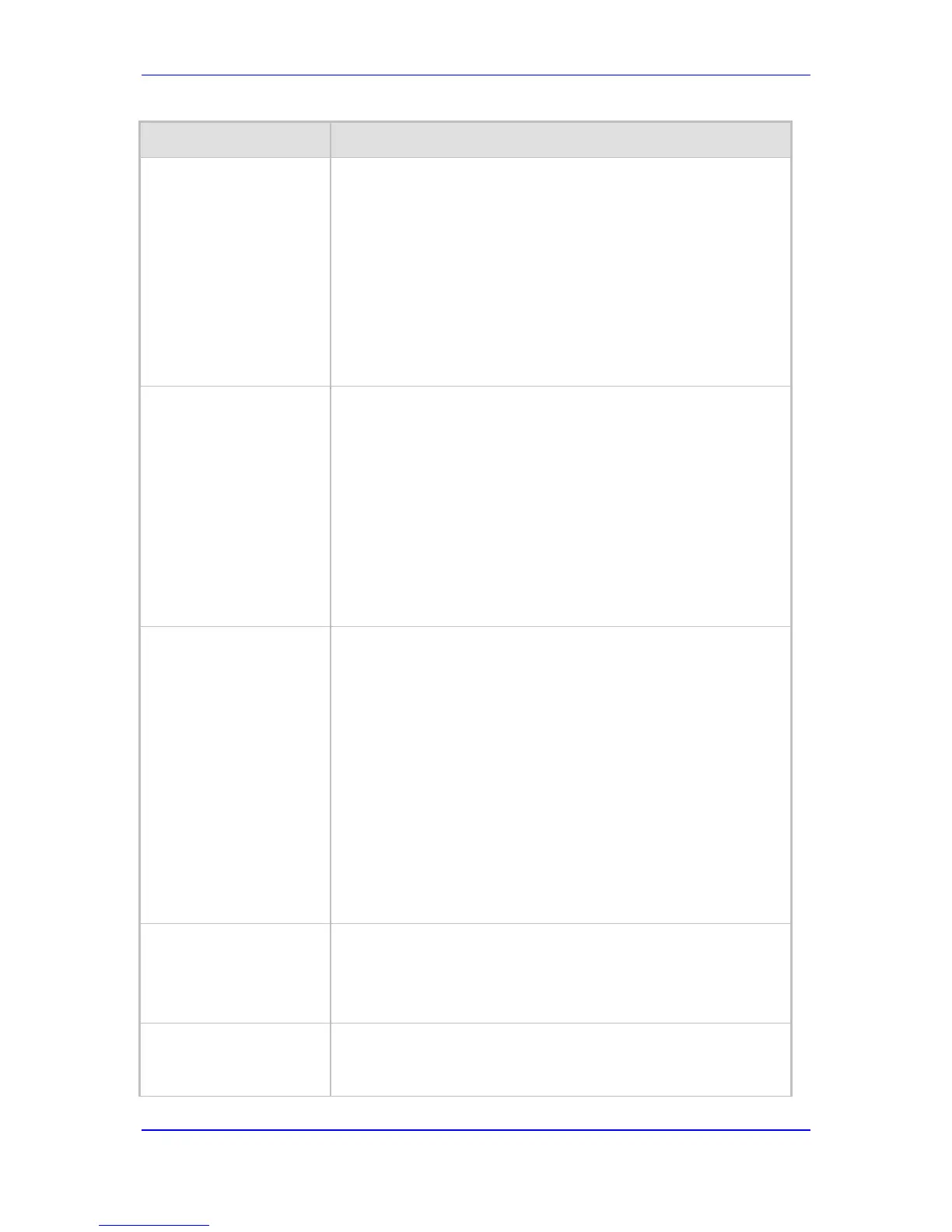the Outbound IP Routing Table table or Proxy Set table, and
rejects all other incoming calls. In addition, if an FQDN is defined
in the routing table or Proxy Set table, the call is allowed to be
sent only if the resolved DNS IP address appears in one of these
tables; otherwise, the call is rejected. Therefore, the difference
between this option and option [1] is that this option is concerned
only about numerical IP addresses that are defined in the tables.
Note: If this parameter is set to [1] or [2], when using Proxies or
Proxy Sets, it is unnecessary to configure the Proxy IP addresses in
the routing table. The device allows SIP calls received from the
routing table.
Web/EMS: Filter Calls to IP
CLI: filter-calls-to-ip
[FilterCalls2IP]
Enables filtering of Tel-to-IP calls when a Proxy is used (i.e.,
IsProxyUsed parameter is set to 1 - see 'Configuring Proxy and
Registration Parameters' on page 228).
[0] Don't Filter = (Default) The device doesn't filter calls when
using a Proxy.
[1] Filter = Filtering is enabled.
When this parameter is enabled and a Proxy is used, the device first
checks the Outbound IP Routing Table before making a call through
the Proxy. If the number is not allowed (i.e., number isn't listed in the
table or a call restriction routing rule of IP address 0.0.0.0 is applied),
the call is released.
Note: When no Proxy is used, this parameter must be disabled and
filtering is according to the Outbound IP Routing Table.
CLI: ip2tel-tagging-dst
[IP2TelTaggingDestDialPl
anIndex]
Determines the Dial Plan index in the external Dial Plan file (.dat) in
which string labels ("tags") are defined for tagging incoming IP-to-Tel
calls. The special “tag” is added as a prefix to the called party
number, and then the Inbound IP Routing Table uses this “tag”
instead of the original prefix. Manipulation is then performed (after
routing) in the Manipulation table which strips the “tag” characters
before sending the call to the endpoint.
The valid values are 0 to 7, where 0 denotes PLAN1, 1 denotes
PLAN2, and so on. The default is -1 (i.e., no dial plan file used). The
routing label can be up to 9 (text) characters.
Notes:
This parameter is applicable only to digital interfaces.
The routing must be configured to be performed before
manipulation.
IP-to-Tel Routing on page 636.
CLI: etsi-diversion
[EnableETSIDiversion]
Determines the method in which the Redirect Number is sent to the
Tel side.
[0] = (Default) Q.931 Redirecting Number Information Element
(IE).
[1] = ETSI DivertingLegInformation2 in a Facility IE.
Web: Add CIC
CLI: add-cic
[AddCicAsPrefix]
Determines whether to add the Carrier Identification Code (CIC) as a
prefix to the destination phone number for IP-to-Tel calls. When this
parameter is enabled, the 'cic' parameter in the incoming SIP INVITE

